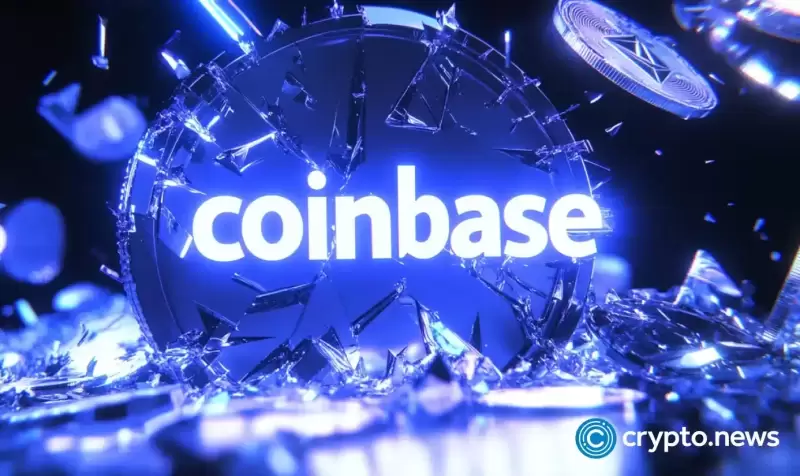 |
|
 |
|
 |
|
 |
|
 |
|
 |
|
 |
|
 |
|
 |
|
 |
|
 |
|
 |
|
 |
|
 |
|
 |
|
Cryptocurrency News Articles
When my credit union and banking peers nervously ask whether Bitcoin is a Ponzi scheme
Apr 09, 2025 at 03:30 pm
Because if we're being honest, Bitcoin's greatest sin might be that it's too transparent about how value works in a financial system built on speculation

Credit union and banking peers often ask me nervously if Bitcoin is a Ponzi scheme. I usually pause, smile, and say: “Are you sure that’s the right question? It’s not whether Bitcoin is a Ponzi scheme—it’s whether you’ve ever encountered something that isn’t.”
Because if we’re being honest, Bitcoin’s greatest sin might be that it’s too transparent about how value works in a financial system built on speculation, belief, and a growth mentality.
Let’s also set some context. The majority of our modern economy isn’t built on hard assets, production output, or even tangible value. It’s built on confidence and credit expansion, a system largely shaped by the thinking of John Maynard Keynes. And to be clear, Keynes wasn’t hiding the ball. His famous quote “In the long run, we’re all dead” was a direct nod to the reality that these systems are inherently unstable over time—and yet, we build anyway.
Don’t believe me? Just look at Tesla or Nvidia’s price to earnings ratios over the past 12 months. Take Tesla; approximately 1.5 trillion in market cap at EOY 2024, with a little over 7 billion in profit. For those of you whose calculators have a hard time with 10 and 13 digit numbers, that’s a measly 0.46% ROI, or about 150 years for your investment to double, if looking strictly at the production value of the P&L. And yet it remains one of the most valuable companies on planet earth.
Governments, businesses, even small-town Main Street operations all depend on borrowing against future productivity. And if the inflows stop? Well, that’s someone else’s problem . . . right?
OK, back to the topic at hand, is Bitcoin an actual Ponzi scheme? Let’s take some Ponzi accusations and reframe the conversation a bit:
Claim: “The gains to early participants are paid directly from new participants’ principal.”
Reality: Yep. Welcome to literally every financial market. No one who made money on Apple stock did so without a new buyer showing up to pay a higher price. Same with Tesla. Same with real estate. Same with fine art. Same with anything speculative (even if classified as ‘securities’). What may be hard to stomach is that Bitcoin doesn’t pretend otherwise.
Claim: “There’s no actual asset being traded—it’s just money in, money out, until the thing collapses.”
Reality: Sounds a lot like the S&P 500 in 1999 (remember the dot-com boom and bust?). Or U.S. housing in 2008. Or NFTs in 2021. Every market—every market—is money in, money out . . . until it isn’t. Some things create value, sure. But most of what we call “investing” is just placing bets on hype cycles and hoping you’re not the last one in the pool when the music stops.
Claim: “The whole (pyramidic) structure depends on a constant inflow of new money.”
Reality: Show me a business that doesn’t. Show me a government that doesn’t. Show me a multi-level org chart—corporate, nonprofit, or military—that doesn’t have a few at the top and many at the bottom supporting it all. Our entire economy is built on inflows, expansion, leverage, and belief. So maybe the problem isn’t what some have described as the speculative nature of Bitcoin . . . maybe the problem is the very structure of modern economies themselves.
Let’s talk about the U.S. Dollar for a minute. The dollar is backed by one thing: trust in the U.S. government. Given everything DOGE has turned up in the past couple of months, are we still 'sure' that trusting the government as a fiduciary is really the 'best' idea?
And even if we squint past the headlines, the numbers don’t lie: the federal government runs an annual deficit north of $2 trillion, while its own currency steadily loses 2–3% of purchasing power per year on a good day. You’d be hard-pressed to find a business owner or credit union CFO who’d call that a sustainable model. There’s no need to dive into conspiracy theories or fraud scandals to see the problem. A Dollar General calculator should suffice.
The dollar isn’t redeemable for gold. It’s not collateralized by anything. It’s a token backed by debt, printed in theoretically (actually?) infinite quantities, and absolutely dependent on continuous belief (faith
Disclaimer:info@kdj.com
The information provided is not trading advice. kdj.com does not assume any responsibility for any investments made based on the information provided in this article. Cryptocurrencies are highly volatile and it is highly recommended that you invest with caution after thorough research!
If you believe that the content used on this website infringes your copyright, please contact us immediately (info@kdj.com) and we will delete it promptly.
-

-

-

-

- Speculation is swirling in the crypto markets as rumors of a Solana ETF continue to build momentum
- Apr 18, 2025 at 05:05 am
- With major financial institutions reportedly eyeing SOL for the next wave of crypto-backed investment products, many traders are asking the big question: Can Solana reach $250 by June?
-

-

-

-

-

- The Wyoming Stable Token Commission May Clarify Its Language to Better Comply with Potential Guidelines from the Securities and Exchange Commission (SEC)
- Apr 18, 2025 at 04:50 am
- The Wyoming Stable Token Commission, a body authorized by the US state to issue a stablecoin, has suggested that it may clarify its language to better comply with potential guidelines from the Securities and Exchange Commission (SEC).



























































